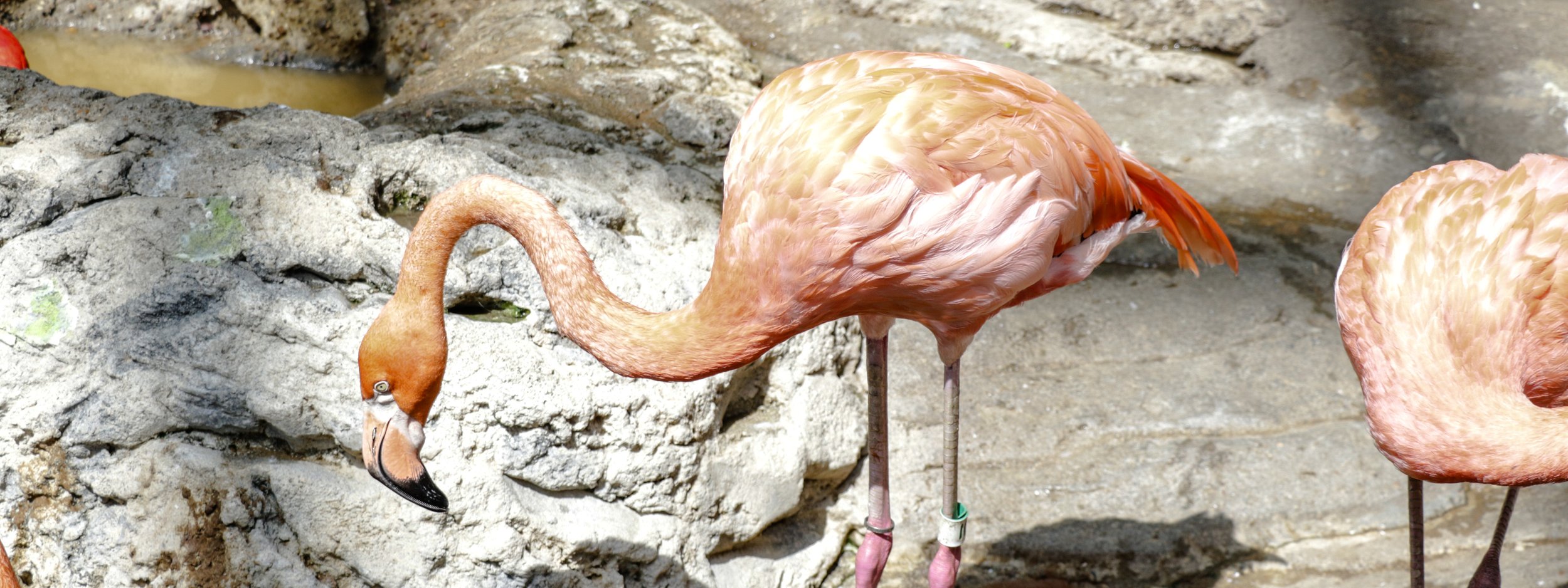
Caribbean Flamingo
Caribbean Flamingo
The common name is Caribbean Flamingo and its scientific name is Phoenicopterus ruber. It is mainly located in the Caribbean the Yucatan peninsula and the Galapagos Islands. it has three main color variations pink, red, and orange. The Caribbean Flamingo reaches heights of 1.2-1.4 meters(3.9-4.6 feet) and generally weighs 2.2-2.8 kg (4.9-6.2 lbs.). Its life expectancy has been observed to be 25 years in the wild with a maximum of 44 years. Although flamingos live to an average of 30 years in captivity the oldest Flamingo in the world is over 75 years old and resides at the Adelaide zoo in Australia. There is no real economic importance or use for humans where flamingos are concerned so they are generally safe from predation for sale in the market and their feathers lose their color over time so even the feathers are not sought after.
A loud deep honking call similar to a goose is how Caribbean flamingos call to each other especially during courtship, of course, they can regulate the volume of their honking for different behaviors and purposes. Caribbean flamingos are the only Flamingo to naturally inhabit North America and the color flamingos possess is not a natural color but comes from somewhere else entirely, it's food. Their downward curving bills have narrow grooves in them that fit together like teeth on the top and bottom. Caribbean flamingos feed on insects, worms, vegetation, algae, and whatever else they filter out of the sediment they stir up into the water with their feet as they start to feed. Carotenoid compounds from small crustaceans are absorbed by their digestive system and delivered to their plumage which causes the vibrant pigment flamingos are known for. They feed during the day by holding their heads down and sweeping their bills through shallow water, they draw water into their bills by opening and closing their beaks. They move their tongue up and down five to six times per second and this helps to push water out of their bills through the grooves in their beaks while keeping food inside of the bill itself. One interesting thing to note about the bill is its shape is curved downward. It is noteworthy to say that the Flamingo is the only bird with this physical characteristic. The beak itself Is uniquely designed by nature to perform the flamingo’s task of eating. What I mean is the beak is designed in reverse, when the Flamingo puts its head down the bill is shaped like a spoon and the other unique physical characteristic of the Flamingo is its mandible, which is its jaw. The flamingo’s beak is hinged with the upper jaw to move freely while the lower jaw is fixed in place because it is fused to the skull or skeleton. This unique trait allows the Flamingo to feed with optimal success while its head is down to the water.
While flamingos don't have very many predators there is a very short list of animals who will take advantage of nests full of eggs or maybe the unwary Flamingo who will be eaten for its meat. This list is Turkey vultures, foxes, badgers, wild boars, yellow-legged gulls, and humans.





